
The Guide to Winning A Filmmaking Contest At STN
Hello Teachers,
For the past several years I’ve had the pleasure of judging various filmmaking contests, including those at STN. As CEO of EditStock I have reviewed hundreds films for both editing skill and filmmaking ability. In 2016 team EditStock became a contestant and won an editing contest hosted by the Los Angeles Post Production Group. Let's just say at this point I know a thing or two about filmmaking contests.
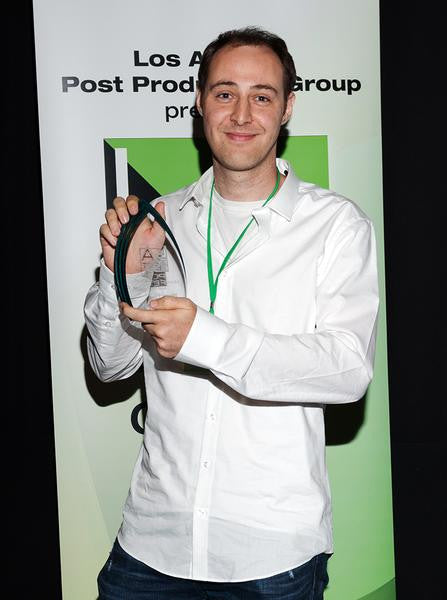
(LA Post Fest Winner Best Film & Best Editing)
In 2016 I gave a presentation at STN called Winning An Editing Contest, after which students clamored with follow up questions. I made two decisions after that presentation:
- To write this filmmaking contest guide for teachers to share with students.
- Every year at STN I will review students cuts with them at the EditStock booth (after they've been judged).
(students work at EditStock's STN booth)
Guide Overview:
Judges score films based on three major categories, which each have subcategories.
- Gimme points: followed directions, continuity.
- Technical Categories: camera, music / audio, editing.
- Creative Categories: acting, storytelling, directing.
These parameters aggregate into a total score. That score does not reflect a ‘grade’ but rather a ranking. For example a score of 80 is not a B, and a 90 is not an A. I think many of the cuts are A+ work :).
Let's look at each of those three major categories, and how to score high the subcategories that makes them up.
Gimme Points:
All of your students should collect full points for followed directions and continuity. These skills do not require equipment or filmmaking skill. It might even be within the contest rules for teachers, as student advisors to personally check these categories.
Followed Directions Subcategory:

The easiest points to earn are the ones for following directions.
The directions for STN are often just one or two guidelines, mostly revolving around the duration of the project, or the requirement to use an image, or line of dialog in your project. Yet, inevitably one or two great entries will fail to meet the criteria. Don’t let that be your students!
Take a look at this chart showing the standard deviation of approximate scores that I gave out to STN students last year. One student turned in a project which was over the time limit. They lost five out of ten points in the followed directions category. That dropped them from the 2nd deviation (top 2% with a score of approximately 80) into the 1st deviation, (top 13% with a score of 75). That was the difference between 1st or 2nd to 6th!
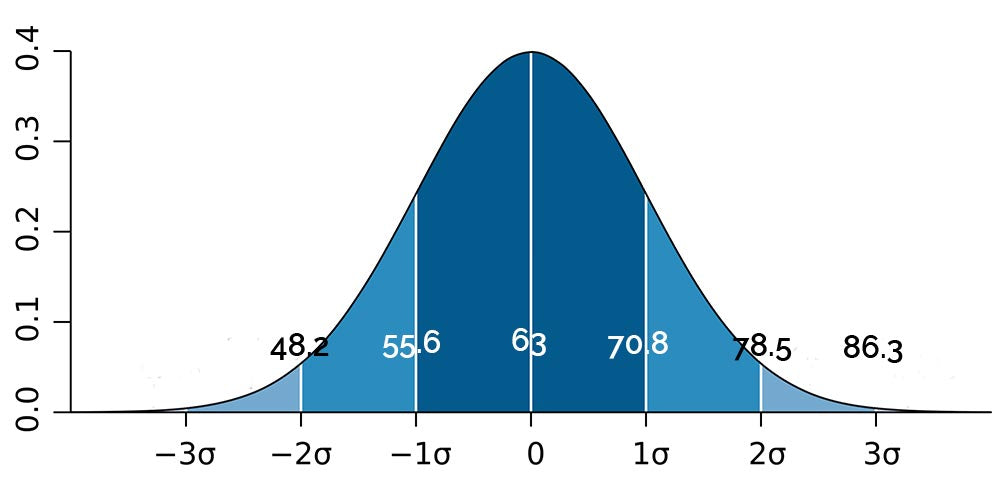
Continuity Subcategory:
I don't take off points for small shot non-matching continuity errors. As an editor I know that many times these are not a big deal, or better yet sometimes intentional. However, I will take off points for major mistakes such as breaking 180 degree line, or poor jump cuts. Students are not going to know about these major rules without your help teaching them. Spend some time on this in the classroom.
Technical Categories:
Teachers often worry that student's will be scored lower for their technical work because of the an unavoidable equipment disparity. Each school has its own set of resources. Some schools have more than others.
I do the best I can to ignore these differences, and instead focus more on the skill a student shows while using that gear. Good white balance does not require a RED camera. Good camera work does not require steadicam, and so on.
Most importantly, an interesting shot doesn’t require anything but planning.
Camera Subcategory:

To gain an average score students should exhibit footage that is:
- In focus.
- White balanced.
- Exposed properly.
To gain an excellent score students should exhibit footage that is:
- Planned.
- Has an intended purpose.
- Tells the story.
To win, what I'm looking for is at least one planned creative shot. Having just one shot like the example above from the Shawshank Redemption will put your students in an elite group. Having a few planned creative shots will most likely win the category. Students should be encouraged to learn how to storyboard, and think about what each shot means before filming. This is what makes filmmaking different than other genres of television like news, documentary, or reality tv; thinking and planning.
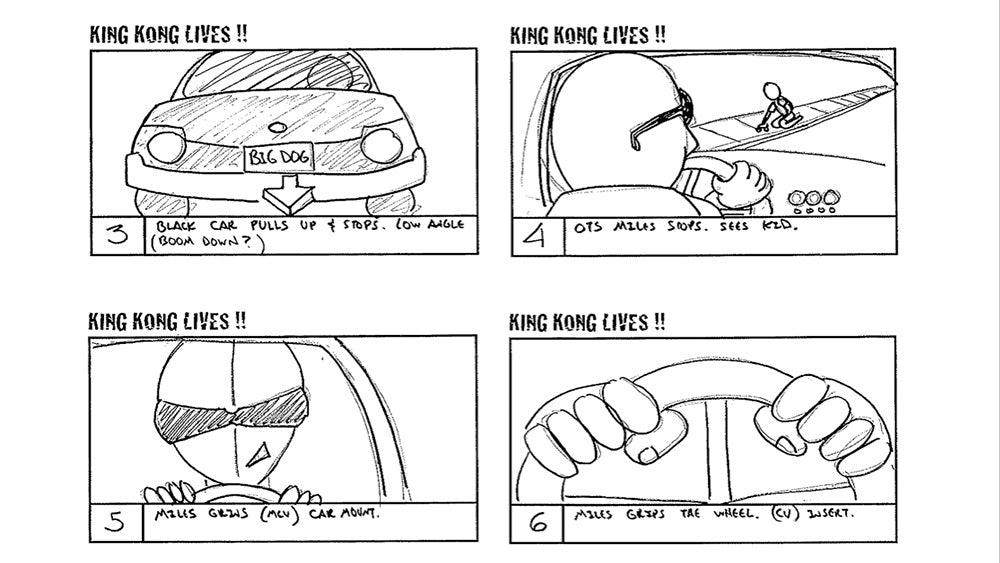
(storyboard from Bully EDU)
In one student project I recently watched a student shot a POV from inside a bag of chips. In my mind, this scores equally to a drone shot from 500 feet above the school.
Audio / Music Subcategory:
In order to receive an average score in this category the student must demonstrate:
- The dialog is easy to hear, does not clip, and is on mic.
- Did the student use natural (nat) sound? They should. Nat sound should be present over all b-roll shots.
- Did the student use sound effects in their film? They should.
In order to receive an excellent score the student must:
- Use natural sound is between ideas, and not just over b-roll.
- The music picked should compliment the story.
- The music should be edited to crescendo along side story beats, and to fade out nicely at the end of the project.
I will not automatically deduct points for not having music. Some projects don’t need it. However, most of the time I encourage students to have it.

Editing Subcategory:
As a professional editor myself, this is the aspect of filmmaking nearest and dearest to my heart. I judge it ruthlessly. Kidding, but I do love it when I see a great cut. Students will score at least in the average range if they:
- Apply graphics nicely (well timed, and nice looking).
- Mix sound properly (no distortion, and music balanced with dialog).
- Cuts are smooth (invisible).
Common mistakes are:
- Dips to black between scenes please.
- Silly transitions.
- Shots that are kept on screen for far too long.
It's difficult to tell what makes up an excellent cut. Students often need an excellent director to get there. I don't get to see the raw footage. I don't know if an amazing editor took a poor project and made it an average one (no easy task) or if they took an excellent project and made it an average one.
Editing is a team effort. A great director, teaching advisor, or fellow student helps the editor tremendously by giving thoughtful feedback.
To give some general guidance I will look for risk taking, which is successful. It's hard to define.
Finally, Avoid Poor Technical Work:
Most of the kids will score at least a 5 out of 10 on these technical subcategories. However, I will give a poor score if there is a major blunder. Major blunders are mistakes that kids could catch if they watched their final export before submitting their project. Major blunders include:
- Incorrectly exported aspect ratio.
- Black holes in the edit.
- Audio drop out.
When I see these mistakes I will check with the director of the contest to make sure the glitches were not caused by the contest itself.
I recommend students watch for video and sound in separate passes. They should turn off the sound and watching for video problems. Then do the same for sound, turn off the screen and listen for any mistakes.
Creative Categories
The creative categories all boil down to one thing; how good the story is. I encourage students to take risks here too. Documentary and news topics should be well researched. Films should have stories with a beginning, middle, and end. More on that in a moment.
Acting Subcategory:
Most students will receive a high average to excellent score in this category. Crying, loving, yelling, really emotions in general can be embarrassing for teenagers to display around each other. I get that. I was a teenager once. Please let your students know that risk taking in acting will be rewarded. If your students put in the effort, I will notice.
Your student gets an excellent score if they actors show bravery.
Storytelling Subcategory:
A good story has a beginning, middle, and end. Lets take a look at the winning cut of this 2016 Doritos Superbowl ad.
The beginning is just two shots, a sad dog followed by a “no dogs allowed” sign. During the middle we see the dogs trying to get in to the store. The end is when the dogs succeed. This was accomplished in 30 seconds! No allowing your students to get away with saying, “but we don’t have enough time to make a beginning, middle, and end.” All stories need this. Otherwise the story is amorphous.
In the professional world we take time to make sure the film’s beginning, middle, and end are well balanced. Take this photo from the cutting room of the recent film JOBS, staring Ashton Kutcher that I was credited as an Associate Editor on. We spent weeks deciding how to build the story.
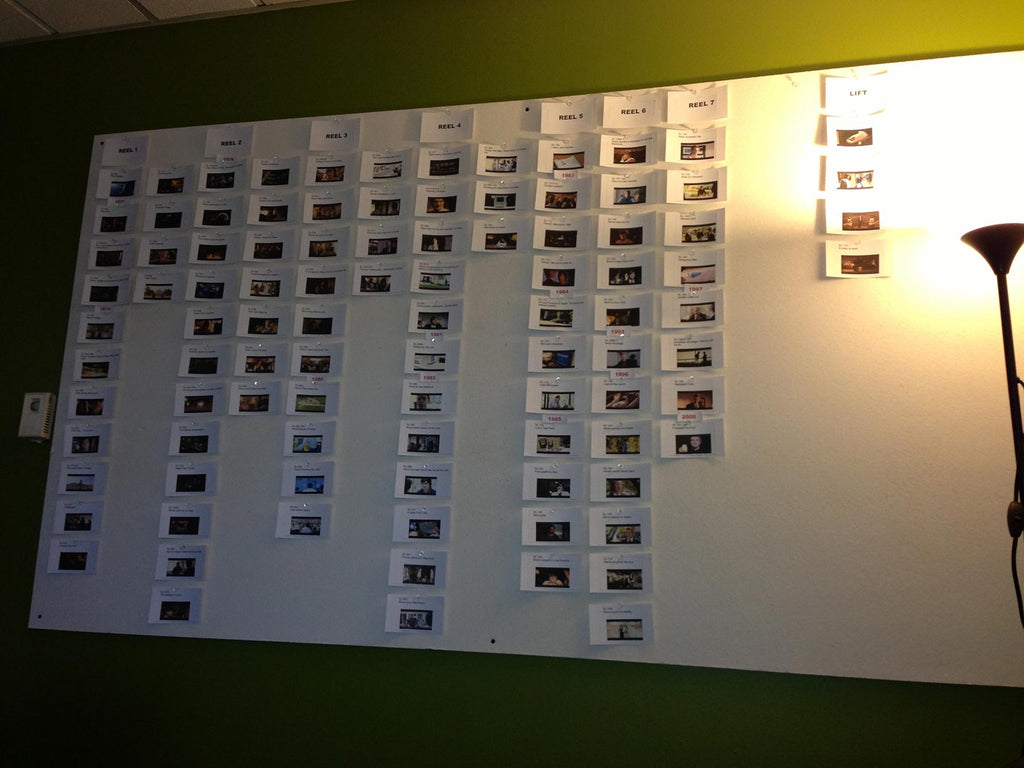
Here is one major pitfall to avoid:
In a film, do not use voice over. Ever. This does not apply to news or documentary.
Voice over is a lazy way of telling your film's exposition (aka the story). Exposition should be shown (not told) through the technical work, like the costumes, locations, and even camera angles. For example instead of a voice over that says, “everyone on earth has become a monkey,” show it!
Voice over causes your audience's ears and eyes to compete in your their brain for attention. Watch the video below to see what if feels like to a viewer who is listening to a voice over while watching a film.
Avoid story cliches. No waking up in the morning and it was all a dream.
When I said this during my presentation I think 25 students fell out of their chairs. If each student takes a moment to look around at the other 24 students on the floor they will understand why it’s cliche, because everyone does it!
Be careful of God and the Machine.
This saying is used to describe a plot problem that is suddenly resolved by some magical act. For example in the movie War of the Worlds aliens have taken over the earth and defeated all humans, but suddenly lose because of bacteria. The audience feels like they’ve been lied to. The character didn’t earn their resolutions through a struggle. If they don't earn it, they didn't change. If they didn’t change, the story didn’t move.
If I’m judging a news story I look for a good balance of the reporter’s opinion, with that of an interviewee. If there is no interviewee it would be nearly impossible to get an excellent score from me.
Directing Subcategory:
Directing = planning. Your directors should expect to work hard, create storyboards, and be a good team manager. This person is in charge of all the categories; sound, editing, story, lighting, acting, everything. If you’ve got a bright student director encourage them to seek perfection instead of good enough.
Former STN contestant Mia Tess is a shining example of planning. Take a look at the music video she planned with her entire school!
In Conclusion:
If you’ve read this far hopefully you’ve gotten some great meaningful advice… from me. It’s important to remember that each judge has their own grading system. Still, if your students follow this advice they will be much better story tellers, and that’s all that matters. I hope to see you all again next year at STN 2017 in Anaheim!
Good luck everyone!
Misha Tenenbaum CEO, EditStock



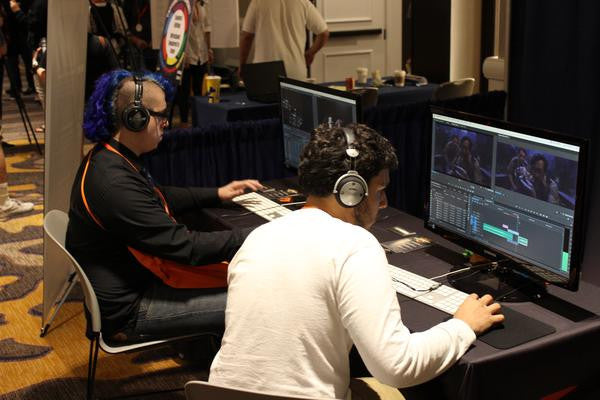






1 comment
This is a great article. Extremely powerful explanation, this must reach more people.